Sequences
A sequence is a list of numbers in a specific order. Each number in the sequence is called a term. The terms in a sequence can be separated by commas and are usually represented using subscripts, such as a1, a2, a3, etc.
Types of Sequences
- Arithmetic Sequences: In an arithmetic sequence, each term is obtained by adding a constant value to the previous term. The constant value is called the common difference, denoted by d. The general form of an arithmetic sequence is: a1, a1 + d, a1 + 2d, a1 + 3d, ...
- Geometric Sequences: In a geometric sequence, each term is obtained by multiplying the previous term by a constant value. The constant value is called the common ratio, denoted by r. The general form of a geometric sequence is: a1, a1 * r, a1 * r2, a1 * r3, ...
- Fibonacci Sequence: The Fibonacci sequence is a special sequence where each term is the sum of the two preceding terms. The sequence starts with 0 and 1, and the subsequent terms are 1, 2, 3, 5, 8, 13, 21, and so on.
Formulas for Sequences
For arithmetic sequences:
an = a1 + (n - 1)d
Sn = n/2 * (a1 + an)
For geometric sequences:
an = a1 * r(n-1)
Sn = a1 * (1 - rn) / (1 - r)
Study Guide
- Understand the difference between arithmetic and geometric sequences.
- Practice identifying the common difference and common ratio in sequences.
- Learn how to find the nth term and the sum of the first n terms for both arithmetic and geometric sequences.
- Work on problems involving real-life applications of sequences, such as population growth, financial investments, and patterns in nature.
- Challenge yourself with problems involving the Fibonacci sequence and its properties.
Sequences are an important concept in mathematics and have various applications in different fields. Understanding the different types of sequences and their properties will help you solve a wide range of problems involving patterns and ordered sets of numbers.
[Sequences] Related Worksheets and Study Guides:
.◂Math Worksheets and Study Guides Seventh Grade. The Pythagorean Theorem
Study Guide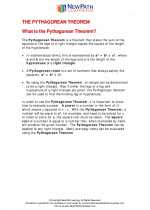 The Pythagorean Theorem
The Pythagorean Theorem  Study Guide
Study Guide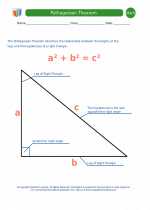 Pythagorean Theorem Definitions
Pythagorean Theorem Definitions  Worksheet/Answer key
Worksheet/Answer key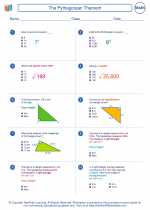 The Pythagorean Theorem
The Pythagorean Theorem  Worksheet/Answer key
Worksheet/Answer key The Pythagorean Theorem
The Pythagorean Theorem  Worksheet/Answer key
Worksheet/Answer key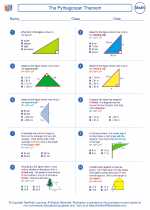 The Pythagorean Theorem
The Pythagorean Theorem  Worksheet/Answer key
Worksheet/Answer key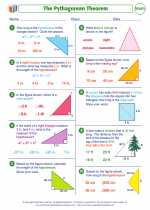 The Pythagorean Theorem
The Pythagorean Theorem  Worksheet/Answer key
Worksheet/Answer key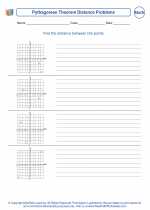 Pythagorean Theorem Distance Problems
Pythagorean Theorem Distance Problems  Worksheet/Answer key
Worksheet/Answer key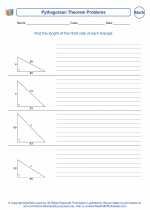 Pythagorean Theorem Problems
Pythagorean Theorem Problems  Worksheet/Answer key
Worksheet/Answer key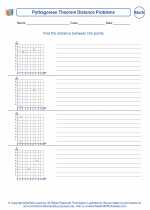 Pythagorean Theorem Distance Problems
Pythagorean Theorem Distance Problems  Worksheet/Answer key
Worksheet/Answer key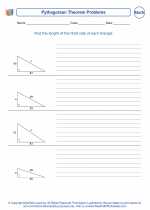 Pythagorean Theorem Problems
Pythagorean Theorem Problems  Worksheet/Answer key
Worksheet/Answer key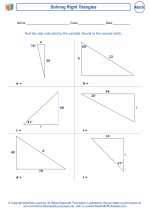 Solving Right Triangles
Solving Right Triangles  Worksheet/Answer key
Worksheet/Answer key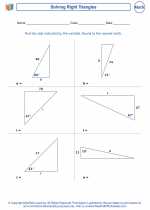 Solving Right Triangles
Solving Right Triangles 

 Study Guide
Study Guide
 Worksheet/Answer key
Worksheet/Answer key
 Worksheet/Answer key
Worksheet/Answer key
 Worksheet/Answer key
Worksheet/Answer key
 Worksheet/Answer key
Worksheet/Answer key
 Worksheet/Answer key
Worksheet/Answer key
 Worksheet/Answer key
Worksheet/Answer key
 Worksheet/Answer key
Worksheet/Answer key
 Worksheet/Answer key
Worksheet/Answer key
 Worksheet/Answer key
Worksheet/Answer key
 Worksheet/Answer key
Worksheet/Answer key

The resources above cover the following skills:
Geometry (NCTM)
Analyze characteristics and properties of two- and three-dimensional geometric shapes and develop mathematical arguments about geometric relationships.
Create and critique inductive and deductive arguments concerning geometric ideas and relationships, such as congruence, similarity, and the Pythagorean relationship.